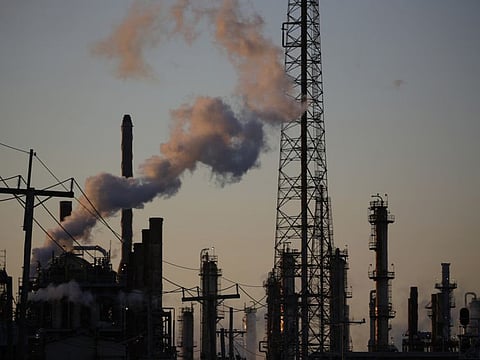Oil is staring at very uncertain times
Return of economic activity and flights likely to help prices up to a point

When supply exceeds demand, prices ought to drop. So, what happens when there is ample supply and a drop in demand — simultaneously? This is basically what happened in the oil market, with prices dropping to one of its lowest levels in two decades.
The case this time is quite distinct from what would usually happen in the oil market, resulting in troughs that are extreme in nature and sustainable in duration.
Now before delving into what happened this time around in the oil market, the dynamics in the market must first of all be explained to better understand the context.
At first, and like any discovered, extracted and exported commodity, the presence of too few suppliers solidified the floor under the price of oil. An increase in demand would slowly increase the price, and so would a curb in supply, regardless of feasible production levels.
A drop in demand, or an increase in supply, would allow the price to slide down. To balance the market and maintain a favourable price for oil exporters, supply must not outpace demand, a situation in which the price of oil would decline ... or even crash if the gap was big enough.
The spread of Covid-19 distorted the above-mentioned dynamics in the oil market.
Cut off demand
Upon the spread, countries introduced lockdowns that resulted in lower demand for oil. The restriction in demand this time was imposed instead of it being organic, resulting in a sudden, but steep, decline in demand. This is contradictory to the usual slowdown in demand, which can occur, for instance, when a government policy is introduced to limit the number of cars, or when fuel is taxed to lower consumption.
Added to that is the fact that countries extended their measures to include restrictions on aviation, causing a semi-halt in flights, bar those dedicated to airlifting Covid-19-related aid.
A supply-side shock
Concurrently, there was a direction by the Organisation for Petroleum Exporting Countries (Opec) to not lower supply. What actually ensued is a surge in supply, leading to a point where supply immensely exceeded the dwindling demand for oil. Since demand was already limited, except for whatever economic activity that endured in a few countries, the expected outcome was an unprecedented crash in prices.
The best manifestation of the historic crash was the negative pricing of future oil contracts in the US, as supply of oil went beyond the storage capacity of countries. The drop into negative territory is to showcase that investors would rather pay someone else to store oil that they cannot take delivery of, or for which storage will be pricey.
This is akin to banks charging negative interest rates for deposits, which signals that banks have more cash than they need, meanwhile offering a safe haven to store that cash. The significance here, though, is not in the negative pricing itself as much as it is about the trajectory that the price of oil is taking.
Nowhere near past highs
While signs of a recovery in the oil market can be detected today, it is, nonetheless, safe to presume that the price is unlikely to recover to the peak level reached more than a decade ago. If anything, and notwithstanding occasional upward blips, the course the price of oil is taking, post its previous peak in 2011, will continue to head downwards.
This is despite the International Monetary Fund’s (IMF) forecast of peak oil demand level by 2040. Here are the reasons as to why that’s the case.
* First, oil is going through the natural production and processing cycle that commodities go through. That is, the by-products such as petrochemicals, become more valuable than the raw commodity itself, which renders the commodity in its unprocessed and unmanufactured form unimportant.
* The number of oil producers and suppliers is increasing around the globe. This means two things. One, there will be an overall increase in the supply of oil from smaller producers, net of whatever supply that goes into domestic consumption. Two, net demand may go up or down depending on how self-sufficient the new producers will become.
The increase in supply from non-Opec members will further dilute whatever control Opec producers may still have over the price of oil. Meaning, oil price inelasticity will continue to be gradually eroded, resulting in extreme cyclical swings in its price.
What is becoming clearer with time is that any potential increase in demand oil, accompanied with surges in price, is not likely to reverse its downward trajectory. Alternative sources of energy, as well as vehicles that do not need gasoline to operate, will further dampen oil’s prospects, potentially reinforcing the ceiling on its price in the foreseen future.
Uncertainty is ever present
Again, that does not mean that there will be no peaks in demand for oil and, hence, its price every now and then. In fact, prices may head upwards for a period of time post Covid-19 as economic activity restarts and as airlines start flying regularly. And as long as the reinvigorated demand is not offset by additional supply.
Optimism surrounding a sustainable long-term increase in oil prices must be, however, expressed with caution, as the outlook itself seems to be anything but promising. Finally, what happened with Covid-19 can happen again with worse consequences, hastening the shift away from oil and lowering demand. Put differently, it is becoming more ostensible with time which way the oil tanker is not sailing.
The last thought that I want to leave you with: Will demand for oil peak in the future?
— Abdulnasser Alshaali is a UAE based economist.
Sign up for the Daily Briefing
Get the latest news and updates straight to your inbox








